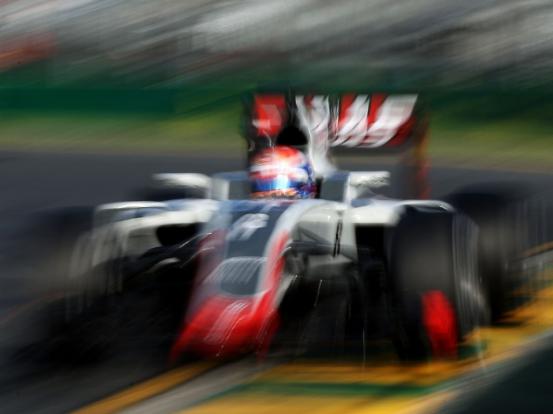- Commissioner’s statement on Ventura, Marte
- Ronnie O’Sullivan: Masters champion ‘felt so vulnerable’ in final
- Arron Fletcher Wins 2017 WSOP International Circuit Marrakech Main Event ($140,224)
- Smith challenges Warner to go big in India
- Moncada No. 1 on MLB Pipeline’s Top 10 2B Prospects list
- Braves land 2 on MLB Pipeline’s Top 10 2B Prospects list
- Kingery makes MLB Pipeline’s Top 10 2B Prospects list
- New Zealand wrap up 2-0 after Bangladesh implosion
- Mathews, Pradeep, Gunathilaka to return to Sri Lanka
- Elliott hopes for rain for Poli
Haas preview the Spanish GP
- Updated: May 9, 2016

Although Haas concede there are “still a lot of areas where we can be better”, the team heads to Spain chasing their fourth points-finish of their debut campaign…
Romain Grosjean Q: You come back to Barcelona having scored points in three of the four races run thus far. When you first came to Barcelona for preseason testing in February, was the thought of being seventh in the driver standings with 22 points by the time you returned for the Spanish Grand Prix something that even entered your mind? “Not really, to be fair. I don’t like to set myself an objective, in terms of position. If I thought about where we could be, what we can do, it’s definitely better than anyone was expecting, and certainly myself. China was a good grand prix to bring us back down to earth and help us to understand a few things. Russia was good, as well. We worked hard to get P8 at the end. We’re beyond expectations, but we’ll take it. We’ve scored points three out of four times. Everyone is improving. There are still a lot of areas where we can be better. Everything has been a great achievement, and we should be able to keep that form.”
Q: Barcelona marks the first and only venue where Haas F1 Team will unload with data secured during preseason testing at the track. How valuable is it to finally have some pertinent track data before arriving at a circuit? “It’s certainly going to be useful to have data from the winter testing, even though the conditions, the temperature and everything are going to be very different. The tires are different as well – we don’t have the supersofts we used in the winter. But I think it’s still going to be good. I’m not sure it’s going to help us to set up the car initially, but it will help us to double-check everything we have done and to see if we’ve been going in the right direction since the winter testing.”
Q: As good as it is to have track data from the preseason test, so will all of the other teams. Is there any advantage beyond simply preparing for the Spanish Grand Prix? “The advantage of having data from the winter testing, and going back a few races into the season, is that you can check if you’ve been doing a good job in going in the right direction, in terms of the setup of the car and so on. I’m very much looking forward to getting back to Barcelona and trying the updates we’ve got and the setups we’ve been using. Hopefully, we’ll get more updates and then check that we’re doing the right thing with the car.”
Q: It’s been two months since you tested at Barcelona. How do you expect the track to change between then and now? “Hotter! Generally, Barcelona has good weather. The track will be the same, as we all know it very well. Just the conditions will be different. Track temperature plays a big role, especially in the last sector in Barcelona where the tires often overheat. Other than that, there’s not much difference.”
Q: In that same span, Haas F1 Team has learned a lot in a very short period of time. Can you explain the team’s growth since first coming to Barcelona at the end of February? “For everyone, it’s been a nice journey. We’re only four races into the season but what we have done, the way we have been growing up, has been impressive. Everyone is now finding their marks. There are still a few things we can improve and a few things we can certainly do better, but we are having a good run of races. We have a good group of people and the drivers are working well with the engineers. As every team, we have ups and downs but, generally, I think from the first test we were a racing team and now, four races into the season, we have shown we’re a good contender for scoring points often.”
Q: In China and in Russia you talked about how difficult it was to get your tires into a proper working temperature. Is there a certain sweet spot temperature-wise where each tire compound works the best? If so, how do you get them there? “There are cars that work better with softer tires, others with harder tires. That’s the philosophy behind the suspension and the downforce of the car. Generally, the bigger teams have less problems to get their tires to work because they normally have more downforce. For us, there are still things we can do. That’s what we worked on in Russia very well. I think we went the wrong direction in China. It was positive, in Russia …
continue reading in source www.planetf1.com
